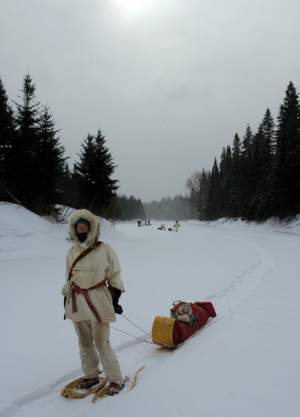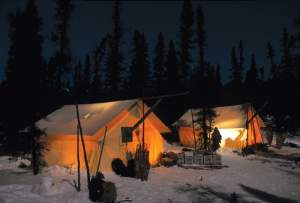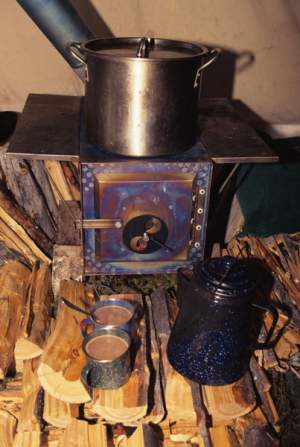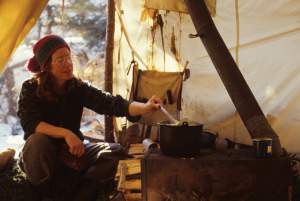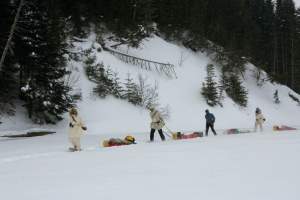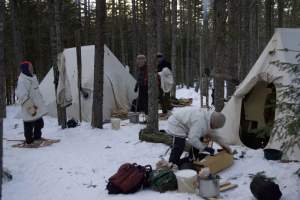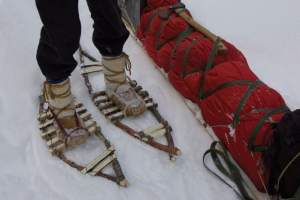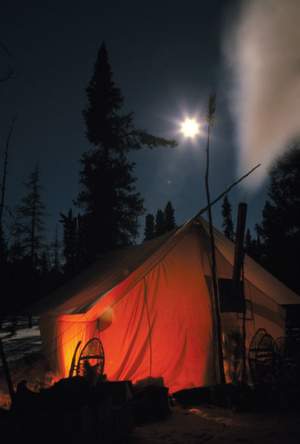Cold. The low-angled winter sun burning dully through a nickel-colored sky. Cold. The kind that bores into you, a stinging insect as it breaches the skin, then tingly as it fords your blood, and finally dull and throbbing as it finds purchase in the marrow of your bones. Bragging Cold. The kind that compels people to go…camping?
Northeasterners are a hardy bunch who possess a notoriously warped sense of a good time. Winter camping heads this list (followed closely by ice-fishing), and yet to those who partake, there’s nothing finer than hunkering down for the night beneath a clear, January sky.
Robert Kimber’s Upcountry column on winter camping, which ran in the Winter 2007 issue, generated enough reader response that we’d like to share some related winter-camping photos. These photos were taken by Garrett Conover on overnight trips in both Maine and Labrador. Conover and his wife, Alexandra, are the Maine guides Kimber wrote about in his column.
Whether it’s a week-long trek into the wilderness with state-of-the-art equipment or a partially comfortable Saturday night spent in an old World War II-era canvas wall tent, there’s something magical about a crackling fire, laughter, and a full belly at 20 below. Here’s to warm sleeping bags, good gloves, and a packed trail.


